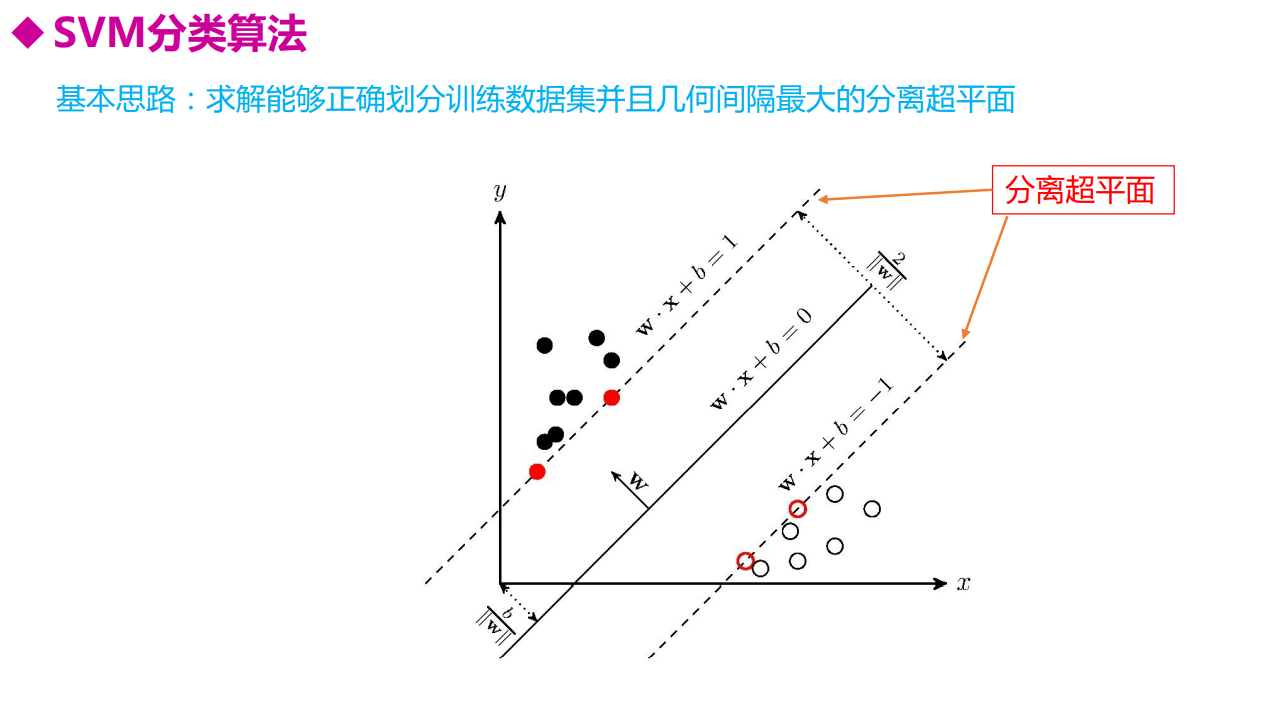
scikit-learn
scikit-learn 是基于 Python 语言的机器学习工具
加载相关包
import numpy as np
from matplotlib import colors
from sklearn import svm
from sklearn import model_selection
import matplotlib.pyplot as plt
import matplotlib as mpl
加载数据、切分数据集
def iris_type(s):
it = {
b'Iris-setosa':0, b'Iris-versicolor':1,b'Iris-virginica':2}
return it[s]
#数据准备
data = np.loadtxt('iris.data', # 数据文件路径i
dtype=float, # 数据类型
delimiter=',', # 数据分割符
converters={
4:iris_type}) # 将第五列使用函数iris_type进行转换
# 数据分割
x, y = np.split(data, (4, ), axis=1) # 数据分组 第五列开始往后为y 代表纵向分割按列分割
x = x[:, :2]
x_train, x_test, y_train, y_test=model_selection.train_test_split(x, y, random_state=1, test_size=0.2

大概鸢尾花的数据如上图,我们要做的就是分类
在超平面上将不同品种数据分割开
SVM分类器的构建
def classifier():
clf = svm.SVC(C=0.8, # 误差项惩罚系数
kernel='linear', # 线性核 高斯核 rbf
decision_function_shape='ovr') # 决策函数
return clf
def train(clf, x_train, y_train):
clf.fit(x_train, y_train.ravel()) # 训练集特征向量和 训练集目标值
C为误差项惩罚系:其越大要求拟合越高,相应泛化能力减弱
kernel有线性核,高斯核 ,rbf核
代码
#加载相关包
import numpy as np
from matplotlib import colors
from sklearn import svm
from sklearn import model_selection
import matplotlib.pyplot as plt
import matplotlib as mpl
def iris_type(s):
it = {
b'Iris-setosa':0, b'Iris-versicolor':1,b'Iris-virginica':2}
return it[s]
data = np.loadtxt('iris.data',
dtype=float, # 数据类型
delimiter=',', # 数据分割符
converters={
4:iris_type}) # 将第五列使用函数iris_type进行转换
x,y=np.split(data,(4,),axis=1)#将第5列设为y
x=x[:,:2]
x_train, x_test, y_train, y_test=model_selection.train_test_split(x, y, random_state=1, test_size=0.2)
# SVM分类器构建
def classifier():
clf = svm.SVC(C=0.81, # 误差项惩罚系数
kernel='linear', # 线性核 高斯核 rbf
decision_function_shape='ovr') # 决策函数
return clf
def train(clf, x_train, y_train):
clf.fit(x_train, y_train.ravel()) # 训练集特征向量和 训练集目标值
# 2 定义模型 SVM模型定义
clf = classifier()
train(clf, x_train, y_train)
def show_accuracy(a, b, tip):
acc = a.ravel() == b.ravel()
print('%s Accuracy:%.3f' % (tip, np.mean(acc)))
# 分别打印训练集和测试集的准确率 score(x_train, y_train)表示输出 x_train,y_train在模型上的准确率
def print_accuracy(clf, x_train, y_train, x_test, y_test):
print('training prediction:%.3f' % (clf.score(x_train, y_train)))
print('test data prediction:%.3f' % (clf.score(x_test, y_test)))
# 原始结果和预测结果进行对比 predict() 表示对x_train样本进行预测,返回样本类别
show_accuracy(clf.predict(x_train), y_train, 'traing data')
show_accuracy(clf.predict(x_test), y_test, 'testing data')
# 计算决策函数的值 表示x到各个分割平面的距离
print('decision_function:\n', clf.decision_function(x_train))
def draw(clf, x):
iris_feature = 'sepal length', 'sepal width', 'petal length', 'petal width'
# 开始画图
x1_min, x1_max = x[:, 0].min(), x[:, 0].max()
x2_min, x2_max = x[:, 1].min(), x[:, 1].max()
# 生成网格采样点
x1, x2 = np.mgrid[x1_min:x1_max:200j, x2_min:x2_max:200j]
# 测试点
grid_test = np.stack((x1.flat, x2.flat), axis=1)
print('grid_test:\n', grid_test)
# 输出样本到决策面的距离
z = clf.decision_function(grid_test)
print('the distance to decision plane:\n', z)
grid_hat = clf.predict(grid_test)
# 预测分类值 得到[0, 0, ..., 2, 2]
print('grid_hat:\n', grid_hat)
# 使得grid_hat 和 x1 形状一致
grid_hat = grid_hat.reshape(x1.shape)
cm_light = mpl.colors.ListedColormap(['#A0FFA0', '#FFA0A0', '#A0A0FF'])
cm_dark = mpl.colors.ListedColormap(['g', 'b', 'r'])
plt.pcolormesh(x1, x2, grid_hat, cmap=cm_light)
plt.scatter(x[:, 0], x[:, 1], c=np.squeeze(y), edgecolor='k', s=50, cmap=cm_dark)
plt.scatter(x_test[:, 0], x_test[:, 1], s=120, facecolor='none', zorder=10)
plt.xlabel(iris_feature[0], fontsize=20)
plt.ylabel(iris_feature[1], fontsize=20)
plt.xlim(x1_min, x1_max)
plt.ylim(x2_min, x2_max)
plt.title('Iris data classification via SVM', fontsize=30)
plt.grid()
plt.show()
print('-------- eval ----------')
print_accuracy(clf, x_train, y_train, x_test, y_test)
# 5 模型使用
print('-------- show ----------')
draw(clf, x)